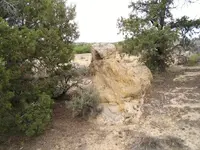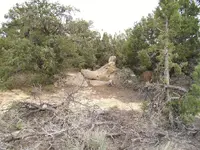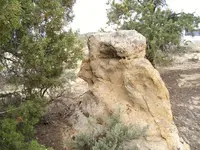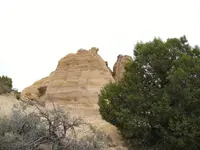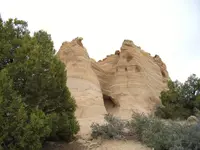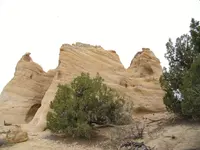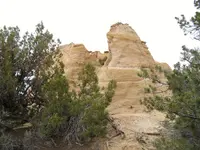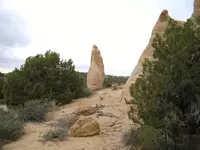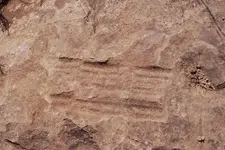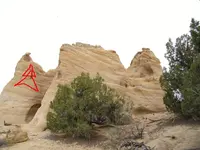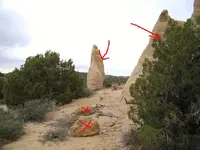You are using an out of date browser. It may not display this or other websites correctly.
You should upgrade or use an alternative browser.
You should upgrade or use an alternative browser.
Treasure Signs and Symbols 101
- Thread starter rangler
- Start date
desertmoons
Bronze Member
Thank you for your thoughts on c3x rangler.
rangler
Bronze Member
- Joined
- Jul 12, 2004
- Messages
- 1,320
- Reaction score
- 201
- Golden Thread
- 0
- Detector(s) used
- for solutions to the jesuit code -email pics to: randy_ferringer@yahoo.com
;rangler8@gmail.no locations needed! oro bro!
- Primary Interest:
- Other
- #83
Thread Owner
rigmover
some really nice pics there, the first one of the letter M
is the closest to the Omega, as this is what Dign was
talking about, closer to the spot the smaller the Owl
and here we just get the ears! ie, the letter M.
The second pic looks very much like a large owl although
the perpective is off ( I think this was built to be seen from the
front and this is a 'side' shot)...but the large Heart is pretty awesome!
The third pic of the bird is the largest I have ever seen!
With the correct orientation of this pic in the proper sequence
will give a valuable clues as to where to go next!
These monuments must be from the early days of the Spanish Colonial
period, when the relationship with the King was on solid ground.
As they became MUCH more subtle as the decades rolled by.
The 4th pic, is a large owl, with a smaller (but still BIG bird) at its left
at the head of the Owl, is a concave area, that looks like a Spanish heart.
On the lower left we see the head and beak of another bird as a pointer.
Pretty good monuments as I see numbers all over the owls head. A 5
a couples of 6's,. a 7, a mans face, frontal..a N and more.
I would say that this is the Alpha, The bird is the Omega and the rock with the
M is the third in line of this site. On the Omega I can see a number 4 and others
A close up of this bird would be nice, and the Owl rock a close up of his head. to read
the numbers..
Pretty bold and bodacious site, have fun with this one..
good luck
rangler
If I can help further, I am happy to .....
some really nice pics there, the first one of the letter M
is the closest to the Omega, as this is what Dign was
talking about, closer to the spot the smaller the Owl
and here we just get the ears! ie, the letter M.
The second pic looks very much like a large owl although
the perpective is off ( I think this was built to be seen from the
front and this is a 'side' shot)...but the large Heart is pretty awesome!
The third pic of the bird is the largest I have ever seen!
With the correct orientation of this pic in the proper sequence
will give a valuable clues as to where to go next!
These monuments must be from the early days of the Spanish Colonial
period, when the relationship with the King was on solid ground.
As they became MUCH more subtle as the decades rolled by.
The 4th pic, is a large owl, with a smaller (but still BIG bird) at its left
at the head of the Owl, is a concave area, that looks like a Spanish heart.
On the lower left we see the head and beak of another bird as a pointer.
Pretty good monuments as I see numbers all over the owls head. A 5
a couples of 6's,. a 7, a mans face, frontal..a N and more.
I would say that this is the Alpha, The bird is the Omega and the rock with the
M is the third in line of this site. On the Omega I can see a number 4 and others
A close up of this bird would be nice, and the Owl rock a close up of his head. to read
the numbers..
Pretty bold and bodacious site, have fun with this one..
good luck
rangler
If I can help further, I am happy to .....
rigmover2307
Jr. Member
heres a couple more of this spot i didnt see anything usefull on these from the bottom but there might be some sighting marks on top, there are three "grooves" or indentations that all line up and point right at a spot on the asphault! or a hillside if you line em up west
Attachments
rigmover2307
Jr. Member
Dear group;
I enquired:
How were outlaws like Cole Younger, Billy the Kid, Jesse James, Frank James and others associated with either the Jesuits or the Templars, my friend? I am fairly certain that most Old West outlaws were of the Protestant persuasion, if they were in fact religious at all, therefore how could have possibly been associated with Roman Catholic religious Orders? Also, if these codes are so complex, how were a bunch of semi-illiterate outlaws supposed to be familiar enough with them in order to even understand them, much less have been able to make some sort of use of them?
Also, if outlaws such as the James gang and Billy the Kid were able to understand these treasure codes, why didn't they just follow the signs to the treasures and leave the more mundane tasks, such as robbing banks and trains, to other less enlightened outlaws, or was armed robbery a sort of hobby with these types?
As of now I have yet to receive a plausible response to my questions. Please note that my questions are valid in context and form and I fully expected Rangler or someone else of his stature to provide at least a semi-plausible explanation. Of course, to answers my questions would to vaporize the entire treasure sign concept, therefore it's probably much better to ignore the existence of questions along this vein.
Your friend;
LAMAR
I enquired:
How were outlaws like Cole Younger, Billy the Kid, Jesse James, Frank James and others associated with either the Jesuits or the Templars, my friend? I am fairly certain that most Old West outlaws were of the Protestant persuasion, if they were in fact religious at all, therefore how could have possibly been associated with Roman Catholic religious Orders? Also, if these codes are so complex, how were a bunch of semi-illiterate outlaws supposed to be familiar enough with them in order to even understand them, much less have been able to make some sort of use of them?
Also, if outlaws such as the James gang and Billy the Kid were able to understand these treasure codes, why didn't they just follow the signs to the treasures and leave the more mundane tasks, such as robbing banks and trains, to other less enlightened outlaws, or was armed robbery a sort of hobby with these types?
As of now I have yet to receive a plausible response to my questions. Please note that my questions are valid in context and form and I fully expected Rangler or someone else of his stature to provide at least a semi-plausible explanation. Of course, to answers my questions would to vaporize the entire treasure sign concept, therefore it's probably much better to ignore the existence of questions along this vein.
Your friend;
LAMAR
rangler
Bronze Member
- Joined
- Jul 12, 2004
- Messages
- 1,320
- Reaction score
- 201
- Golden Thread
- 0
- Detector(s) used
- for solutions to the jesuit code -email pics to: randy_ferringer@yahoo.com
;rangler8@gmail.no locations needed! oro bro!
- Primary Interest:
- Other
- #87
Thread Owner
This question should be directed to Dign, as it was revealed by reposting his data - so now - you too share the loss - of his input as he has been disgusted with naysayers, critics and deniers - and has left!!
Any questions, sadly now - will NEVER be answered......Sad indeed.
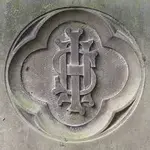
Any questions, sadly now - will NEVER be answered......Sad indeed.

G6 "Whatsoever a man soweth, that shall he also reap."Old Dog
Gold Member
rangler said:Meanwhile back to the theme...
Treasure numbers, you will see some number on EVERY Alpha Monument that you run across as well as the Omega, a vital part of Sign and Symbols 101
~~~
Fill in the blanks, I know that there is lots of speculation of different 'numbers' that stand for different treasure symbols:
The number 7, as G is the seventh letter of the alphabet, and that stands for GOLD and
some say for camp spots for the seventh day he rested passage in the Bible
the number 5 stands for Silver, I think because it is the next odd number under seven.
The number 8 stands for a treasure collection room or vault.
Lets see what you folks can contribute to the list of treasure numers,
Letters are fair game as well..
" I am the seventh son of a seventh son, and in the whole world
there is only one, I am the one"......Johnny Rivers
An E or 3 as a single sign will tell you to "go back" or "turnabout" "wrong way"
The 3 may be reversed to look like an E.
It may also be turned on it's side so that it looks like a lower case M. and may be disguised as birds flying..
It will also mark the third and omega corner of a triangle.
okey dokey
Full Member
rangler
Bronze Member
- Joined
- Jul 12, 2004
- Messages
- 1,320
- Reaction score
- 201
- Golden Thread
- 0
- Detector(s) used
- for solutions to the jesuit code -email pics to: randy_ferringer@yahoo.com
;rangler8@gmail.no locations needed! oro bro!
- Primary Interest:
- Other
- #90
Thread Owner
Rigmover,
The last pics seem to be more like trail markers than treasure signs.
I may be wrong, seeking a second opinion here......OD?
rangler
The last pics seem to be more like trail markers than treasure signs.
I may be wrong, seeking a second opinion here......OD?
rangler
rangler
Bronze Member
- Joined
- Jul 12, 2004
- Messages
- 1,320
- Reaction score
- 201
- Golden Thread
- 0
- Detector(s) used
- for solutions to the jesuit code -email pics to: randy_ferringer@yahoo.com
;rangler8@gmail.no locations needed! oro bro!
- Primary Interest:
- Other
- #91
Thread Owner
Okey Dokey
A pic standing further back to get the context of the marks on the close
as this is too tight of a shot to look for confirmation marks,
however lacking that large pic, this seems to be strata in the rock
forming some compacted tight horizonal lines. I see what your seeing
but I think it is organic hehehe
rangler
~~~
 "having more fun than a human being is allowed to have
"having more fun than a human being is allowed to have  "
"
A pic standing further back to get the context of the marks on the close
as this is too tight of a shot to look for confirmation marks,
however lacking that large pic, this seems to be strata in the rock
forming some compacted tight horizonal lines. I see what your seeing
but I think it is organic hehehe
rangler
~~~
 "having more fun than a human being is allowed to have
"having more fun than a human being is allowed to have  "
"Old Dog
Gold Member
okey dokey
There are 16 bars on top and 8 below
This is vara markers 16 x 8, 80 or 800
Trail markers only.
There are 16 bars on top and 8 below
This is vara markers 16 x 8, 80 or 800
Trail markers only.
Old Dog
Gold Member
rangler said:Okey Dokey
A pic standing further back to get the context of the marks on the close
as this is too tight of a shot to look for confirmation marks,
however lacking that large pic, this seems to be strata in the rock
forming some compacted tight horizonal lines. I see what your seeing
but I think it is organic hehehe
rangler
~~~
Old Dog that last nugget was almost Top Secret Category lol!
rangler
"having more fun than a human being is allowed to have"
There is plenty more where that came from
Old Dog
Gold Member
Rigmover,
The signs in these pics are specialised
The first one I have scribbled up is of a silver sign
The second shows your silver sign (behind the tree)
and your main trail marker.
This could also be an alpha triangle corner
The signs in these pics are specialised
The first one I have scribbled up is of a silver sign
The second shows your silver sign (behind the tree)
and your main trail marker.
This could also be an alpha triangle corner
Attachments
okey dokey
Full Member
Thanks, OD
It was about 30 ' fromthe turtle head
okey dokey
It was about 30 ' fromthe turtle head
okey dokey
rigmover2307
Jr. Member
Old Dog said:Rigmover,
The signs in these pics are specialised
The first one I have scribbled up is of a silver sign
The second shows your silver sign (behind the tree)
and your main trail marker.
This could also be an alpha triangle corner
Sorry for the delay, been out running a sluice and a pan for two days... Anyhoo, in the second pic you marked; the large standalone rock with an arrow pointing at it, it is also the rock with the M carved on it it is to the inside facing the other larger rock. Does this change anything? For the record, im pretty sure these signs relate to i site i have located already, im trying to reverse engineer all the signs in the area as a learning experiance and to try to figure out if theres more right here or if thesse all relate to the same cashe. Said cashe site may or may not be within a half mile to one mile radius of here. also any Alphas would be bout 7 miles away at the canyon entrance nearer the main trail that followed the river, ill get a pic tomorrow of that.
MD Dog
Bronze Member
hadji009 said:old dog would you elaborate more on the third and omega corner of a triangle that you talked about earlier in post? thanks brent
Old Dog
Gold Member
hadji009 said:old dog would you elaborate more on the third and omega corner of a triangle that you talked about earlier in post? thanks brent
The alpha corner or #1 corner is the most southern
The Beta or #2 corner is the next most northern corner
The Omega, (Kenworthy called it the Motherly corner) is #3
it will be the farthest north
measure the sides and add. go in the direction the motherly corner says to go.
the distance will be the sum of the sides or three times that sum.
dig at this spot.
I highly recommend not missing the second corner by skipping directly to the omega first.
Note ... there is no such thing as a dig here mark related to anything Spanish.
They NEVER EVER put a mark indicating that a treasure was in a given place.
You ALWAYS have to measure to get to it.
rangler
Bronze Member
- Joined
- Jul 12, 2004
- Messages
- 1,320
- Reaction score
- 201
- Golden Thread
- 0
- Detector(s) used
- for solutions to the jesuit code -email pics to: randy_ferringer@yahoo.com
;rangler8@gmail.no locations needed! oro bro!
- Primary Interest:
- Other
- #100
Thread Owner
Thank you Old Dog for the great insight to the Alpha Triangle , very original
and NOT published anywhere that I know of!!! Great stuff, the reason for the Thread!
and Thanks to all True Treasure Hunters that made the sane and logical comments
and continue to fight against the agenda setters and naysayers!
meanwhile back at the ranch...
here Dign explains how to read a Treasure Map disguised as a petroglyph..
It doesn't take much thought to realize that this pictograph took a long, long time to create.
And, to the untrained eye, this appears to a pictograph of what "some Indian saw one day"
and he decided to make a "painting" of it.To the trained eye, however, this is nothing less
than a treasure map that leads to a treasure accumulation room(s) in Colorado.
This panel is exquisitely done, and the author of this panel really knew his stuff when it
came to "blending in" the treasure signs with the topic, which, in this case, the topic
(the distraction) is a Spaniard on horseback.
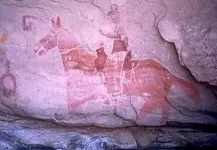
by these people as the main highway in and out, and this wash is designated by the major
crack (it actually looks more like a ledge, but I'll call it a crack)that is just below the horses
rear legs. For those of you studying LeVan Martineau's book, you know this effect as "rock
incorporation".
The leg of the horse that is farthest to the back actually makes contact with this major crack,
which tells us that they were, indeed, using this major wash as their trail (there were no doubt
other trails, but this is the one that they are giving you directions to).
Looking at the next horse leg forward, we see that it makes contact with a crack that is branching
off of the major crack that we just discussed. This is telling us that we, too, must branch off of
this major trail in order to locate this area of the trerasure room (and mines?). By following this crack
on up into the horses body and saddle we get the info we need to locate the "things" that are on that
particular branch of the wash.
We now need to look at the horses front leg(?). This leg makes contact with a totally different
crack (a different branch of the wash), where we will find another "area of interest".
There is a third crack (branch) that goes right up into the cowboys stirrup, and within this stirrup
is found the info needed to locate another treasure room.
In closing, the topo of this area should allow you to locate the main wash that has the branches
that are talked about in this treasure map.
In all, I count at least three treasure rooms, which is usually an indication that the area is loaded
with mines. This ends the first discussion.
I'm not sure that I need to relay the following information to you guys, I'm fairly certain that
you have already picked-up on it. Anyway, here goes: The reason for the horses hooves making
contact with these cracks is for the purpose of relaying the "motion of travel." In other words,
a horse travels on its hooves, and therefore, the hooves making contact with cracks (ledge)
shows the "motion of travel" up these washes.
~~~
More great stuff for us to understand and add to our knowledge!
hang in there TTH's...the Ignore Button is causing much agitation !
Much to our delight
rangler
P14 "The mocker seeks wisdom and finds none, but knowledge comes easily to the discerning."
and NOT published anywhere that I know of!!! Great stuff, the reason for the Thread!
and Thanks to all True Treasure Hunters that made the sane and logical comments
and continue to fight against the agenda setters and naysayers!
meanwhile back at the ranch...
here Dign explains how to read a Treasure Map disguised as a petroglyph..
It doesn't take much thought to realize that this pictograph took a long, long time to create.
And, to the untrained eye, this appears to a pictograph of what "some Indian saw one day"
and he decided to make a "painting" of it.To the trained eye, however, this is nothing less
than a treasure map that leads to a treasure accumulation room(s) in Colorado.
This panel is exquisitely done, and the author of this panel really knew his stuff when it
came to "blending in" the treasure signs with the topic, which, in this case, the topic
(the distraction) is a Spaniard on horseback.

Looking on a topo of this area you should be able to locate the major wash that was usedby these people as the main highway in and out, and this wash is designated by the major
crack (it actually looks more like a ledge, but I'll call it a crack)that is just below the horses
rear legs. For those of you studying LeVan Martineau's book, you know this effect as "rock
incorporation".
The leg of the horse that is farthest to the back actually makes contact with this major crack,
which tells us that they were, indeed, using this major wash as their trail (there were no doubt
other trails, but this is the one that they are giving you directions to).
Looking at the next horse leg forward, we see that it makes contact with a crack that is branching
off of the major crack that we just discussed. This is telling us that we, too, must branch off of
this major trail in order to locate this area of the trerasure room (and mines?). By following this crack
on up into the horses body and saddle we get the info we need to locate the "things" that are on that
particular branch of the wash.
We now need to look at the horses front leg(?). This leg makes contact with a totally different
crack (a different branch of the wash), where we will find another "area of interest".
There is a third crack (branch) that goes right up into the cowboys stirrup, and within this stirrup
is found the info needed to locate another treasure room.
In closing, the topo of this area should allow you to locate the main wash that has the branches
that are talked about in this treasure map.
In all, I count at least three treasure rooms, which is usually an indication that the area is loaded
with mines. This ends the first discussion.
I'm not sure that I need to relay the following information to you guys, I'm fairly certain that
you have already picked-up on it. Anyway, here goes: The reason for the horses hooves making
contact with these cracks is for the purpose of relaying the "motion of travel." In other words,
a horse travels on its hooves, and therefore, the hooves making contact with cracks (ledge)
shows the "motion of travel" up these washes.
~~~
More great stuff for us to understand and add to our knowledge!
hang in there TTH's...the Ignore Button is causing much agitation !
Much to our delight
rangler
P14 "The mocker seeks wisdom and finds none, but knowledge comes easily to the discerning."
Similar threads
- Replies
- 0
- Views
- 158
Users who are viewing this thread
Total: 1 (members: 0, guests: 1)
Latest Discussions
-
Confederate Gold from the Civil War was Found in a Shocking Place
- Latest: diamonddave
-
-
-
-
-

